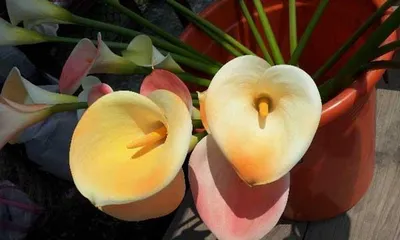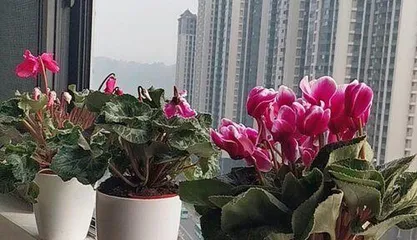Calla lily is a tropical plant with vibrant colors and beautiful shapes, loved by many plant enthusiasts. However, many people are unclear about whether calla lilies are toxic and if they are suitable for indoor cultivation. The following article will detail the toxicity of calla lilies and methods for indoor care.

I. What is the toxicity of calla lilies?
Calla lilies belong to the Araceae family, and the entire plant contains a toxic substance—fluoroacetic acid. Fluoroacetic acid is a strong acid that can easily corrode skin and mucous membranes, causing symptoms such as vomiting, diarrhea, and thirst after entering the human body.
II. Does the toxicity of calla lilies affect the human body?
Although calla lilies are toxic, as long as they are handled correctly, they will not have a significant impact on the human body. The sap of the calla lily is the most toxic part. If the sap accidentally comes into contact with the skin or mucous membranes, it should be promptly rinsed with plenty of clean water to avoid causing chemical burns.

III. Care Methods for Calla Lilies
1. Suitable Temperature: Calla lilies grow best in an environment of 15°C to 25°C. Temperatures that are too low or too high are not conducive to the growth of calla lilies.
2. Light: Calla lilies love abundant sunlight but should not be exposed to direct scorching sun. They can be placed in a bright indoor location or in a semi-shaded area.
3. Watering: Calla lilies need to be kept moist frequently, but do not overwater to avoid root rot.

4. Fertilizer: Apply fertilizer once a month; you can use fertilizer specifically designed for calla lilies.
5. Soil: Calla lilies prefer well-draining, fertile soil. A mixed soil rich in leaf mold and perlite can be used for cultivation.
IV. How to handle accidental ingestion of calla lilies?
If the leaves, stems, or roots of a calla lily are accidentally ingested, one should immediately drink some warm water and use a beverage containing alkaline substances (such as milk) to neutralize the toxic substances remaining in the mouth and esophagus, and then seek medical treatment at a hospital.
V. How to relieve symptoms of skin irritation from calla lilies?
If the sap of a calla lily accidentally comes into contact with the skin, it can cause symptoms such as a burning sensation and redness. In this case, the affected area should be rinsed with warm water, or substances with antibacterial and anti-inflammatory effects, such as vitamin E oil or aloe vera gel, can be applied.
VI. How to avoid harm from the toxicity of calla lilies?
It is important to avoid placing calla lilies where children, the elderly, or pets can reach them. At the same time, when pruning, transplanting, or performing other operations, gloves should be worn to avoid direct contact with the sap of the calla lily.
VII. What varieties of calla lilies are suitable for indoor cultivation?
There are many varieties of calla lilies on the market suitable for indoor cultivation, such as 'White Gem', 'Flame', 'Red Dan', etc. These varieties not only have beautiful flowers but are also more suitable for cultivation in a home environment.
VIII. Can calla lilies be used as air-purifying plants indoors?
Calla lilies can effectively absorb harmful substances such as formaldehyde and benzene from indoor air, and have a certain air-purifying effect. However, because calla lilies are toxic themselves, they are not the best choice for air purification indoors.
IX. How to dispose of the remaining parts of calla lilies?
If the calla lily has withered or wilted, its roots and remaining parts should be cleaned up promptly to avoid rot and bacterial growth.
X. What suggestions do calla lilies offer for home decoration?
When decorating a home, choose non-toxic, low-formaldehyde materials to avoid harmful substances released from decoration materials from harming the calla lilies. At the same time, suitable varieties of calla lilies can be hung at home, which not only beautifies the indoor environment but also has a certain air-purifying effect.
XI. How to choose a variety of calla lily suitable for cultivation?
When choosing a variety of calla lily, one should first understand its growing environment and requirements, and select a variety suitable for home cultivation. In addition, varieties with different colors and shapes can be chosen according to personal interest and preference.
XII. What are the propagation methods for calla lilies?
The main propagation methods for calla lilies include division, cuttings, and seedlings. Among these, division is the most common method, where the old plant can be divided into several smaller plants for transplantation.
XIII. On what occasions are calla lilies suitable as gifts for others?
Calla lilies are suitable as holiday or birthday gifts for others, expressing good wishes and care. Additionally, placing calla lilies in home decoration is also a good choice.
XIV. How to properly dispose of calla lily waste?
When disposing of calla lily waste, wilted leaves, roots, and other parts should be placed in a covered trash can to avoid environmental pollution and hazards. If possible, this waste can be sorted and recycled.
XV.
In summary, although calla lilies are toxic, as long as they are used and cared for correctly, they will not have a significant impact on the human body. Calla lilies are suitable for cultivation in a home environment. One can choose varieties suitable for indoor care and pay attention to avoiding ingestion and contact with the sap of the calla lily.